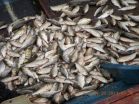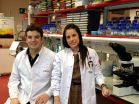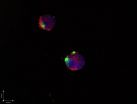(Press-News.org) An international study has devised a new measure for the "livability" of major cities across the world. The Global Liveable Cities Index (GLCI) takes into account the sensibilities of ordinary working people from 64 cities, balancing work and play, environmental awareness, localism, globalism and many other factors. Details are published in the World Review of Science, Technology and Sustainable Development.
According to Tan Khee Giap of the National University of Singapore and colleagues at University of California, Davis, and Curtin University, in Bentley, Australia, existing major city indices can be divided into two groups. The first includes those that put a higher value on cities based on economic-financial prowess, and strong global agenda-setting power in political and cultural matters. The second ranks cities based on their having a pleasant living environment, a mild climate and a scenic locale. However, such measures ignore the multidimensional nature of what makes a city liveable.
The team suggests that a combination of all those factors and several others should provide a much more balanced perspective on a city's "value" to its citizens from the economic, aesthetic, environmental and other perspectives. Moreover, the team asserts that, "The implicit ethical values of a balance between work and play, and of a balance between thinking globally and acting locally are values which we are comfortable in advocating to any city, and which we think most people could accept." The factors they take into account in their measure include (in no particular order of merit): economic vibrancy and competitiveness, domestic security and stability, socio-cultural conditions, public governance, environmental friendliness and sustainability. These factors, each given equal weight, provide a conceptual framework for a concept of liveability in the team's index.
In the 1950s about one third of the world's population lived in cities, by the second decade of the new millennium this proportion had risen to about one half and it is projected that by 2050, almost three-quarters of us will live in urban, rather than rural or other, areas. It is important for the comfortable and sustainable development of cities and the quality of life of their citizens that we define and understand what makes a city liveable.
From the economic perspective, liveability is a key characteristic that attracts people with talent and money leading to putatively self-fulfilling economic growth and resilience and power on the global scale. But, city dwellers are not all rich and talented and their growing populations must have available to them opportunity for personal growth and a good quality of life too.
The team describes their index as a work in progress, but posits a liveability list of the 64 cities studied, which includes many of the most populace cities. The ranking of the top ten is as follows: Geneva, Zurich, Singapore, Copenhagen, Helsinki, Luxembourg, Stockholm, Berlin, Hong Kong, Auckland. New York City does not appear until number 17, despite being ranked number 1 by economic indicators and other ranking schemes. Tokyo is number 18. London is number 22. Moscow close to the bottom of the rankings at number 62 and Jakarta bottom of their list at number 64.
However, the team has simulated new rankings based on how environmental, political and economic change to improve liveability might alter the order and shown that Singapore could rise to joint #1 with Geneva while Chicago, Shanghai, Amman and Abu Dhabi could jump from relatively low-ranking positions to much higher up the team's urban league table. "The rank of a city today is not necessarily a good indicator of its rank in the future," the team suggests. Environmental restoration and transport infrastructure improvements already underway in many Asian, and specifically Chinese cities, could see the higher liveability today of European cities outstripped as those developing cities develop further.
The team's ongoing work involves assessing 200 global cities including 100 from Greater China, 30 from South East Asia, 20 from the Middle East and 50 from Europe, Australia, New Zealand, North and South America.
INFORMATION:
Giap, T.K., Thye, W.W. and Aw, G. (2014) 'A new approach to measuring the liveability of cities: the Global Liveable Cities Index', World Review of Science, Technology and Sustainable Development, Vol. 11, No. 2, pp.176–196.
In a recent paper published in Nature Nanotechnology, Joel Moser and ICFO colleagues of the NanoOptoMechanics research group led by Prof. Adrian Bachtold, together with Marc Dykman (Michigan University), report on an experiment in which a carbon nanotube mechanical resonator exhibits quality factors of up to 5 million, 30 times better than the best quality factors measured in nanotubes to date.
Imagine that the host of a dinner party tries to get his guests' attention by giving a single tap of his oyster spoon on his crystal glass. Now, imagine, to the amazement of all, ...
New Danish-led research suggests that signs of brain aging can be postponed in mice if placed on a high-fat diet. In the long term, this opens the possibility of treatment of children suffering from premature aging and patients with Alzheimer's and Parkinson's disease. The research project is headed by the Center for Healthy Aging, University of Copenhagen and the National Institute of Health.
When we get older, defects begin to develop in our nervous system, our brain loses some of its intellectual capacity, and the risk of developing diseases such as Parkinson's and ...
Using DESY's ultrabright X-ray source PETRA III, researchers have observed in real-time how football-shaped carbon molecules arrange themselves into ultra-smooth layers. Together with theoretical simulations, the investigation reveals the fundamentals of this growth process for the first time in detail, as the team around Sebastian Bommel (DESY and Humboldt Universität zu Berlin) and Nicola Kleppmann (Technische Universität Berlin) reports in the scientific journal Nature Communications. This knowledge will eventually enable scientists to tailor nanostructures ...
Researchers at the Cognition and Brain Plasticity group of the Bellvitge Biomedical Research Institute (IDIBELL) and the University of Barcelona have been tracking the traces of implicit and explicit memories of fear in human. The study has been published in the journal Neurobiology of Learning and Memory and describes how in a context of fear, our brain differently encodes contextual memory of a negative event (the place, what we saw...) and emotional response associated.
The study measures electrodermal activity of 86 individuals in a fearful generated in the laboratory ...
Bethesda, MD (Nov. 5, 2014) — Up to 15 percent of the general adult population is affected by irritable bowel syndrome (IBS), and most patients struggle to find effective drug therapy. A new guideline from the American Gastroenterological Association (AGA) provides these patients and their physician's guidance. The new guideline and accompanying technical review have been published in Gastroenterology, the official journal of the AGA Institute.
"Because no IBS therapy is uniformly effective, many patients describe a history of a variety of treatments alone or in ...
What sounds counter-intuitive to an activity commonly perceived as quiet is the broad recommendation of scientists at Michigan State University (MSU) recommending that small-scale fishing in the world's freshwater bodies must have a higher profile to best protect global food security.
In this month's journal Global Food Security, scientists note that competition for freshwater is ratcheting up all over the world for municipal use, hydropower, industry, commercial development, and irrigation. Rivers are being dammed and rerouted, lakes and wetlands are being drained, fish ...
Noonan syndrome is a rare disease that is characterised by a set of pathologies, including heart, facial and skeletal alterations, pulmonary stenosis, short stature, and a greater incidence of haematological problems (mainly juvenile myeloid leukaemia, or childhood leukaemia). There is an estimated incidence of 1 case for every 1,000–2,500 births, and calculations show some 20,000–40,000 people suffer from the disease in Spain. From a genetic point of view, this syndrome is associated to mutations in 11 different genes —the K-Ras gene among them— ...
PATIENTS with a specific type of oesophageal cancer survived longer when they were given the latest lung cancer drug, according to trial results being presented at the National Cancer Research Institute (NCRI) Cancer Conference today (Wednesday).
Up to one in six patients with oesophageal cancer were found to have EGFR duplication in their tumour cells and taking the drug gefitinib, which targets this fault, boosted their survival by up to six months, and sometimes beyond.
This is the first treatment for advanced oesophageal cancer shown to improve survival in patients ...
Fatih Uckun, Jianjun Cheng and their colleagues have taken the first steps towards developing a so-called "smart bomb" to attack the most common and deadly form of childhood cancer — called B-lineage acute lymphoblastic leukemia (ALL).
In a November study in the new peer-reviewed, open-access journal EBioMedicine, they describe how this approach could eventually prove lifesaving for children who have relapsed after initial chemotherapy and face a less than 20 percent chance of long-term survival.
"We knew that we could kill chemotherapy-resistant leukemia cells ...
The current Ebola outbreak shows how quickly diseases can spread with global jet travel.
Yet, knowing how to predict the spread of these epidemics is still uncertain, because the complicated models used are not fully understood, says a University of California, Berkeley biophysicist.
Using a very simple model of disease spread, Oskar Hallatschek, assistant professor of physics, proved that one common assumption is actually wrong. Most models have taken for granted that if disease vectors, such as humans, have any chance of "jumping" outside the initial outbreak area ...






